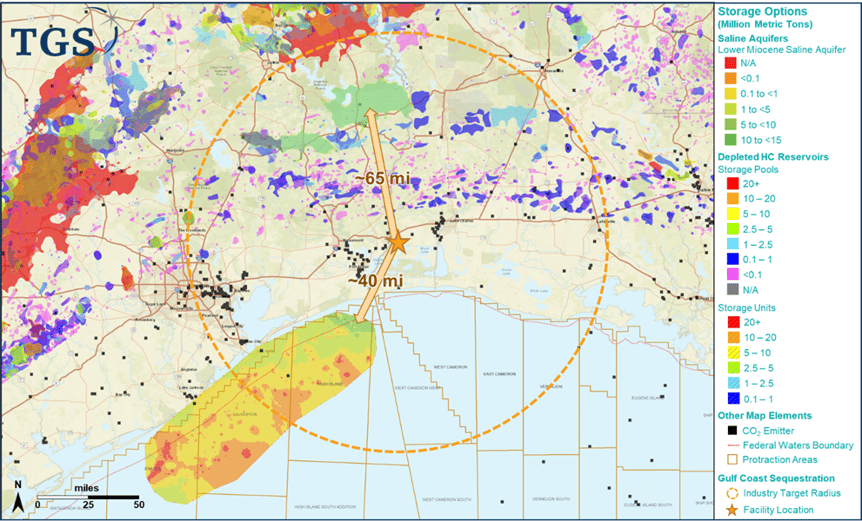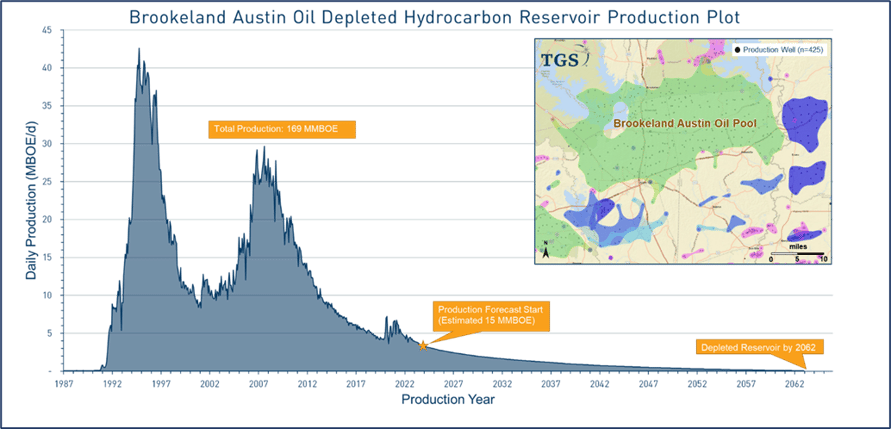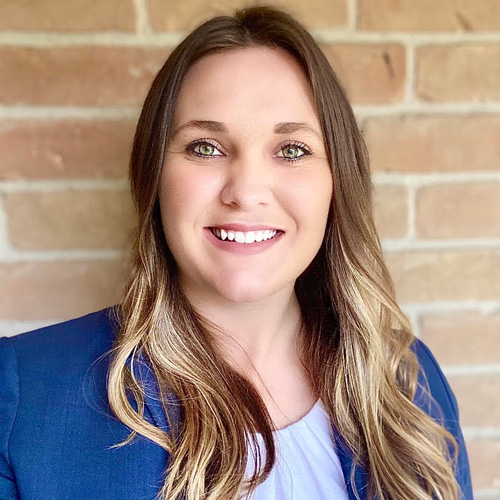Battelle is partnering with industry leaders in direct air capture and carbon sequestration to construct one of the largest direct air capture and storage facilities in the United States.
March has been an ambitious month for Battelle, who recently submitted their Department of Energy bid for Project Cypress, a Direct Air Capture and Storage (DAC+S) hub with a proposed location in southwest Louisiana. Battelle will be managing the project and will collaborate with industry-leading partners including direct air capture technology providers Climeworks and Heirloom and a leading geologic storage company, Gulf Coast Sequestration. The Project Cypress DAC Hub initiative is to capture and store carbon from ambient air and safely and permanently inject it into saline aquifer reservoirs for permanent storage, thus removing it from the atmosphere and decreasing the Gulf Coast green house gas footprint.
TGS’ Carbon AXIOM1 application illustrates some viable options for storing CO2 produced by industrial plants in the area of interest, as shown in the image below. The DAC+S hub will be centrally located in Calcasieu Parish, Louisiana, targeting 29 large industrial plants with ~80 million metric tons (Mt) of CO2 emissions per year1 and has an operational startup target of 2027. The northeastern Lower Miocene Saline Aquifer, located offshore Gulf Coast ~40 miles from the facility, has a storage potential of ~10 Mt per square kilometer with a storage efficiency of 40%. This reservoir lies at a depth of 7,000 feet and is ~300 meters thick. The reservoir characteristics of the 300-meters-thick aquifer include an average porosity of 15%, temperature of 130°F, and a pressure of 3,625 psi. The Gulf Coast region has numerous subsurface storage options including saline aquifers and depleted hydrocarbon reservoirs, but the saline aquifers are more preferable with less overall risk.
Although depleted hydrocarbon reservoirs are not being targeted at the moment for Project Cypress, these reservoirs will likely be favorable in the future with sizeable storage capacity and minimized risk with wellbores properly plugged and abandoned. According to TGS’ Well Performance Dataset, the Brookeland Austin Oil Pool in Carbon AXIOM2 will be depleted by 2062, producing 70 BOE/d assuming current technology, reservoir characteristics, and number of wells. Currently, the reservoir has produced 169 MMBOE with 15 MMBOE forecasted production. At present, the reservoir has a storage potential of 2.75 Mt, which will more than double when the pool is fully depleted. The reservoir is producing from the Austin Chalk and lies at a depth of 11,000 feet. It has adequate reservoir characteristics including 21% average porosity, 250 mD of permeability, a reservoir temperature of 260°F, and an average total pressure of 2,316 psi.
The future of carbon storage in the Gulf Coast region is promising and will be a prime location for reducing global emissions. Companies like Battelle, Climeworks, Heirloom, and Gulf Coast Sequestration are blazing the way forward and will set the standard for future companies looking to enter the carbon capture and storage industry.
Figures:

1TGS Carbon AXIOM application with approximate location of the industry target radius for the Project Cypress DAC Hub. Arrows points to two viable options for sequestering CO2 within the targeted radius.

2TGS Well Performance data displaying the Brookland Austin Oil Depleted Hydrocarbon Reservoir current and forecasted production.


